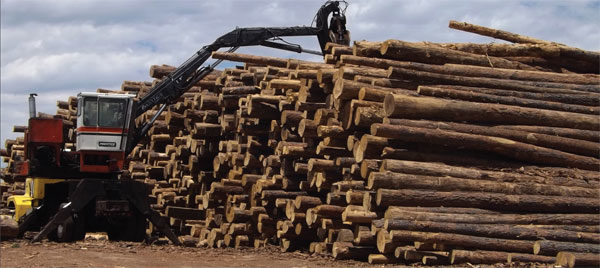We hear that phrase, but then wonder, what is it really good for? Well, naturally it is good for lumber and firewood, but what else? It always seemed good to snag my fishing hook on a submerged branch or small log, or even my flyfishing hook on an overhanging branch. Surely it must have other uses.
Well, it does, there are literally hundreds, from housing to high-tech medicines, energy production, agriculture, and the list goes on. Oh, and it is really good at producing smoky skies when not used for manufacturing the other hundreds of beneficial products. Isn’t it interesting that we complain about a power plant producing a little wisp of smoke along with the water vapor, but then allow and even set large fires dumping tons and tons of heavy smoke particles into the air and say that is good?
With so many beneficial uses for wood, you would think that we would thin out and harvest the trees using as much of every part possible for beneficial uses, then cleaning up the small branches left, using prescribed fire. That would greatly reduce the monster wildfires of today and at the same time, improve the watershed, tree growth, beauty, wildlife habitat, recreation opportunity and forage. The harvesting and manufacturing of the wood products grows jobs and economy so we can afford to do an even better job of management.
The recent loss of the Western Excelsior plant in Mancos is a major economic loss to the entire county and beyond. Over 100 direct jobs lost, but many don’t see all the support businesses that lose and the funding for the school district, and the list goes on. One major item that escapes most is the loss of forest management opportunity. The aspen stands are starting to die out from old age and the way to regenerate them is to cut them and of course use them for beneficial purposes. The only other option is to allow massive, very hot fires, producing tons of smoke to burn up the trees to let nature start over again. That would be a terrible waste of the resources that our Creator provided for us to use.
The wood-products businesses are the only economical “tools” for managing the forests. These forests are way behind in management needs if they are to see a healthy future. This will require more industry tools to harvest and regenerate just what is dying off every year in the spruce, fir and pine areas. The Excelsior plant loss is a real blow to forest management as well as local economic health. That leaves the area with only two full-time milling operations, the Aspen Wallwood plant and Stoner Top Lumber. To make full economical use of the forest products, we need more diversity and production of manufactured products.

Below, pine logs at Aspen Wallwood that are set to be turned into paneling, rather than wildfire smoke. At right, blue-stain pine that will be milled into beautiful paneling. In the author’s opinion, these photos depict forest management in real life.
Many of you probably don’t realize that a pine beetle infestation is killing off ponderosa pines on the west end of the Glade on the forest. What can be done with the dead wood? Two choices are to let it burn or use it. With some innovative thinking and marketing, the Aspen Wallwood plant has found that the beetle-killed trees become infected with a fungus that turns the sapwood a blue/gray color that many builders really like for paneling, so they harvest them, mill them into higher-quality paneling. This is an example of how our local wood industry is reducing potential wildfire smoke, improving watersheds, creating better forage for wildlife and livestock, providing jobs and improving local economy by being able to harvest and utilize the dying trees. If we want a healthy forest to enjoy, we are going to need to help develop a more diverse and higher production wood industry tool to do the job for us. That of course requires that the Forest Service is able to make the timber available in a very short and timely manner before the wood begins to rot, becoming unusable except for wildfire smoke production. Support our local wood industries. Shucks, we have lumber, paneling in pine, spruce, aspen, hardwood flooring, pressed wood firewood logs and more.
Dexter Gill is a retired forest manager who worked for private industry, three Western state forestry agencies, and the Navajo Nation forestry department. He writes from Lewis, Colo.








